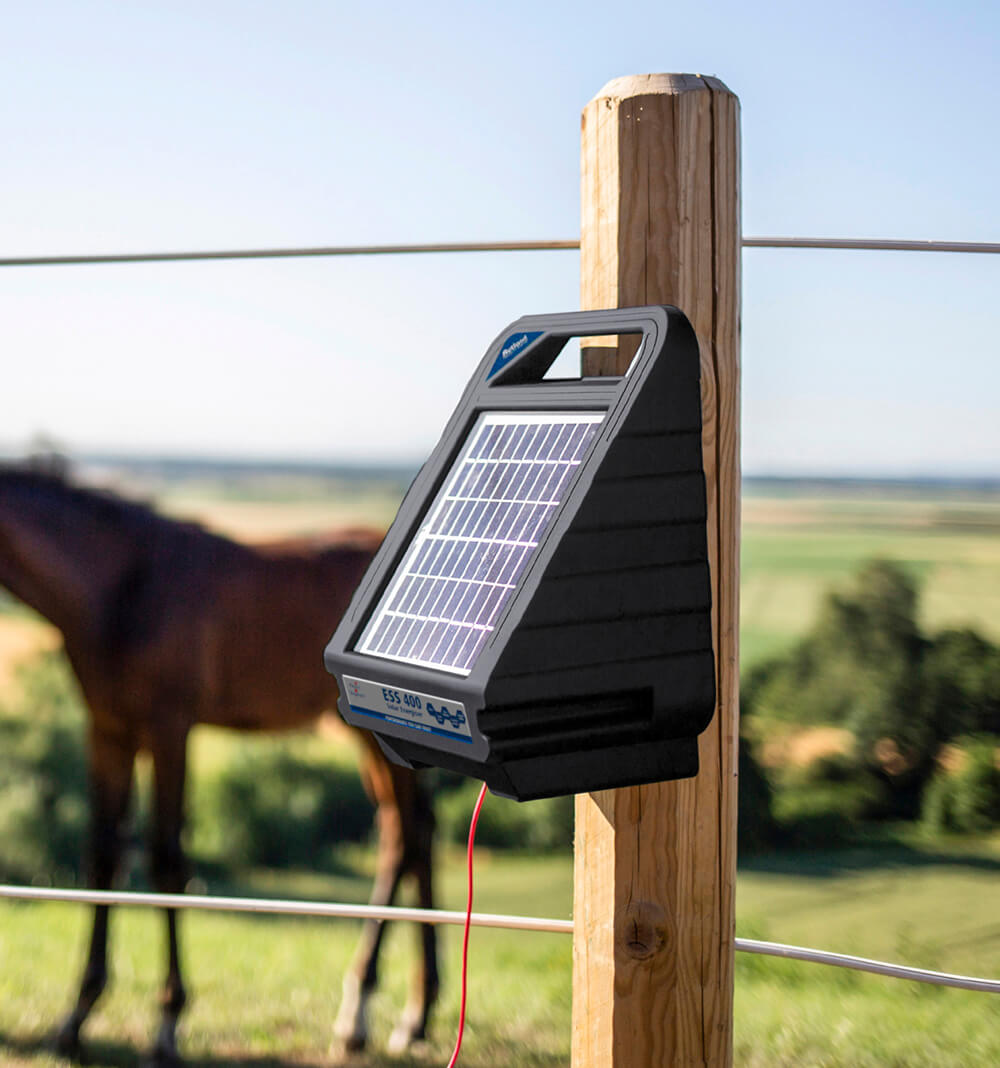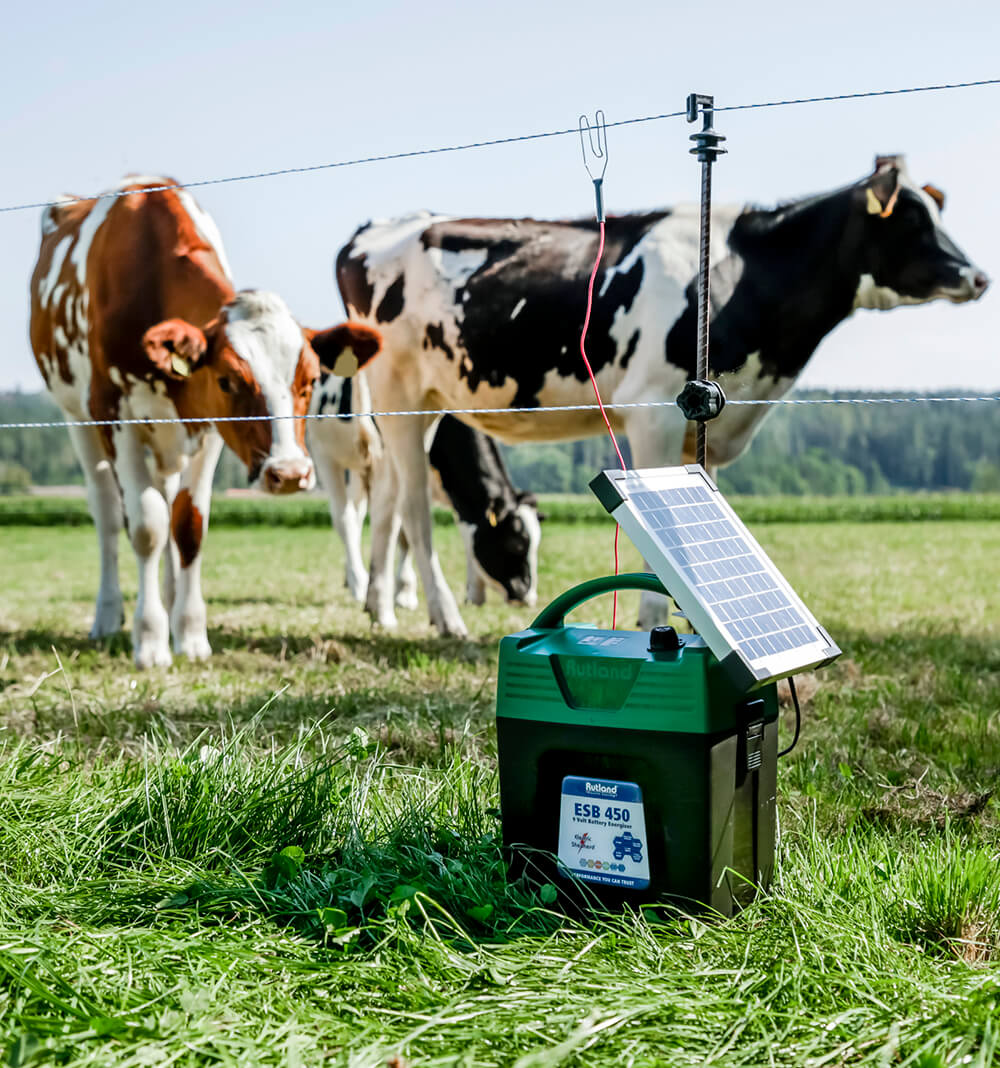
Ultimate Guide to Electric Fencing
There are several different ways you can use electric fencing to contain your livestock, but choosing the right energiser, voltage and wire/tape all depends on the type of animals in your fields.
 Some animals are easy to control, such as cows and horses. They understand not to cross the fencing while grazing which means you can use a lower voltage and fewer lines of wire/tape. Other animals like sheep need a higher voltage to convince them it’s a bad idea to attempt to get through the fence. When looking to buy an energiser you need to consider how are you going to power it. There are many ways to run power including mains, battery, solar.
Some animals are easy to control, such as cows and horses. They understand not to cross the fencing while grazing which means you can use a lower voltage and fewer lines of wire/tape. Other animals like sheep need a higher voltage to convince them it’s a bad idea to attempt to get through the fence. When looking to buy an energiser you need to consider how are you going to power it. There are many ways to run power including mains, battery, solar.
Mains powered energiser: A great solution if you have easy access to mains and usually the preferred option. There is much less maintenance required as you don’t have to worry about replacing the battery or recharging when flat. It’s cheap to run and it's highly reliable and powerful.
Battery powered energiser: The benefit of choosing battery power is for users who need a semi-permanent electric fence. The energiser is easily portable and its batteries can be recharged more than 750 times.
Solar-powered energiser: Perfect for remote areas, solar energisers work on solar power meaning the battery charges off daylight and converts it into electricity. Extremely cost-effective and very easy to use.
Knowing which fencing is best suited for your livestock will ensure they stay protected and enclosed at all times. We have put together some advice to help you pick the correct Electric Fencing supplies for your farm and livestock: 
Cattle:
Cows are easily trained to respect electric fencing. Once zapped the fencing will act as a psychological barrier that cattle know not to cross. It’s key to use a wire or tape that is visible and substantial so the herd can spot the fencing. Cows will even graze on the lush leafy pasture slightly underneath a wired fence being vigilant of the wire above its head.
A recommended conductor for cattle and calf is two separate lines of Jumbo Electro-Wire around 40cm separating the earth wire from the ground and 35cm separating the two lines of wire. Wherever possible use a mains powered electric fencing energiser, like the Rutland ESM10000i, as there are no batteries to service or go flat. This effective 230-volt Energiser is ideal for long fences and robust animals such as bulls, dairy cows and beef cattle.
Electric fencing is not only ideal for keeping your herd in one place but great for controlling your cows’ grazing patterns and perfect for strip grazing!
Horse:
A horse will inch its face closer and closer to an electric fence until its whiskers get a shock. They do this to see whether a fence is energized so don’t take any risks and maintain the current on the fence at all times. It’s also important to consider the height of the fence. Is your horse a good jumper? Could he jump over the fence?
 Your pasture should have visible fences so your horse knows its boundaries. Electric wire or tape such as 2 separate lines of Electro-Tape around 48cm separating the earth wire from the ground and 48cm separating the two lines of wire. The Rutland ESS400 is a highly effective compact solar device for powering electric fencing in horse paddocks.
Your pasture should have visible fences so your horse knows its boundaries. Electric wire or tape such as 2 separate lines of Electro-Tape around 48cm separating the earth wire from the ground and 48cm separating the two lines of wire. The Rutland ESS400 is a highly effective compact solar device for powering electric fencing in horse paddocks.
Sheep:
Due to sheep’s thick wool coats they must be trained to respect electric fences quickly. Their thick wool coats insulate and protect them from electricity meaning they are more determined to get through the fence as they don’t get the same shock that cattle and equines do.
A recommended conductor for sheep and lambs is 5 separate lines of Maxi Electro-Wire around 15cm separating the earth wire from the ground, 15cm separating the first two lines of wire and 20cm between the top lines of wire. While 2000v is best suited for cattle and horses you’re looking at 5000v for sheep and many more strips of wire! The Gallagher Solar S40 will power up to 5km of electric fencing an output of 7900v.
Pigs:
With very little hair pigs can respond very well to electric fencing and respect it quickly. Did you know pigs are more trainable than dogs or cats? These are clever animals and will remember any lesson learnt fast and shouldn’t cause you too many problems. 
A recommended conductor for pigs is 3 separate lines of Galvanised Wire or Electro-Wire around 15cm separating the earth wire from the ground and 12cm separating the two lines of wire.
Poultry:
While electric fencing is great for keeping animals safe it also ensures predators and pests stay away too. Chicken’s fencing is less focused on keeping them in and more focused on keeping them safe and protected from predators such as foxes or badgers.
Our range of Fenceman Galvanised Wire and netting is perfect for chicken coops and runs due to its durable and easy to work with qualities.
We stock a great range of electric fencing online from quality brands such as Rutland, Gallagher, Fenceman and more. If you require any advice on this cost-effective way of keeping your animals in or keeping pests out give us a call on 01625 861 588.

